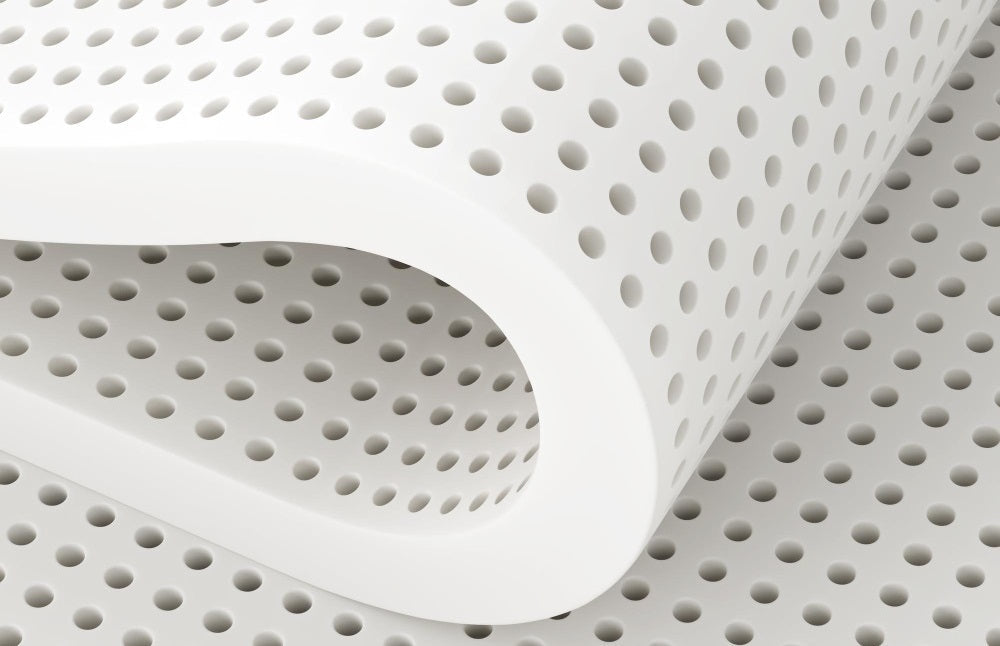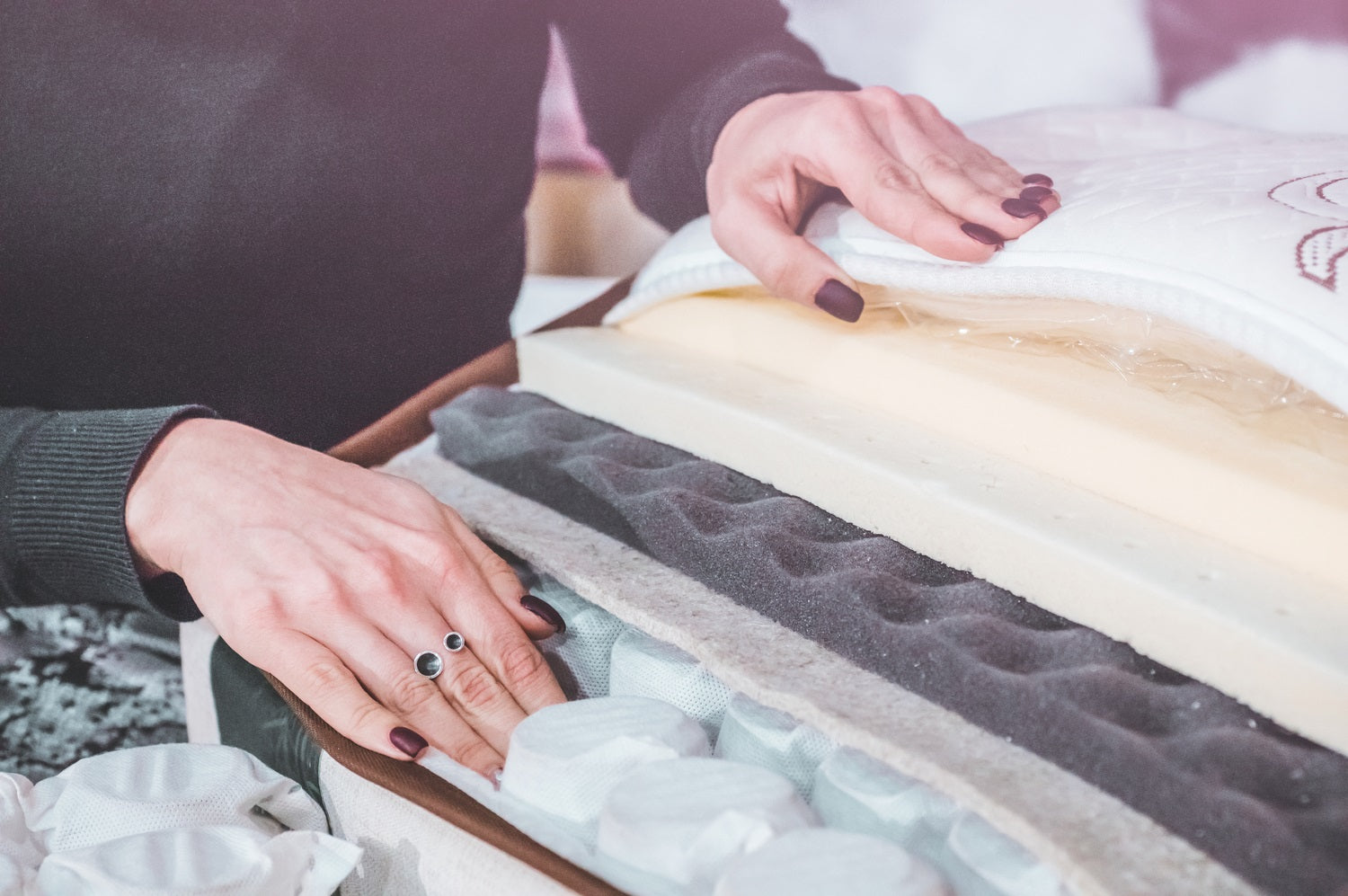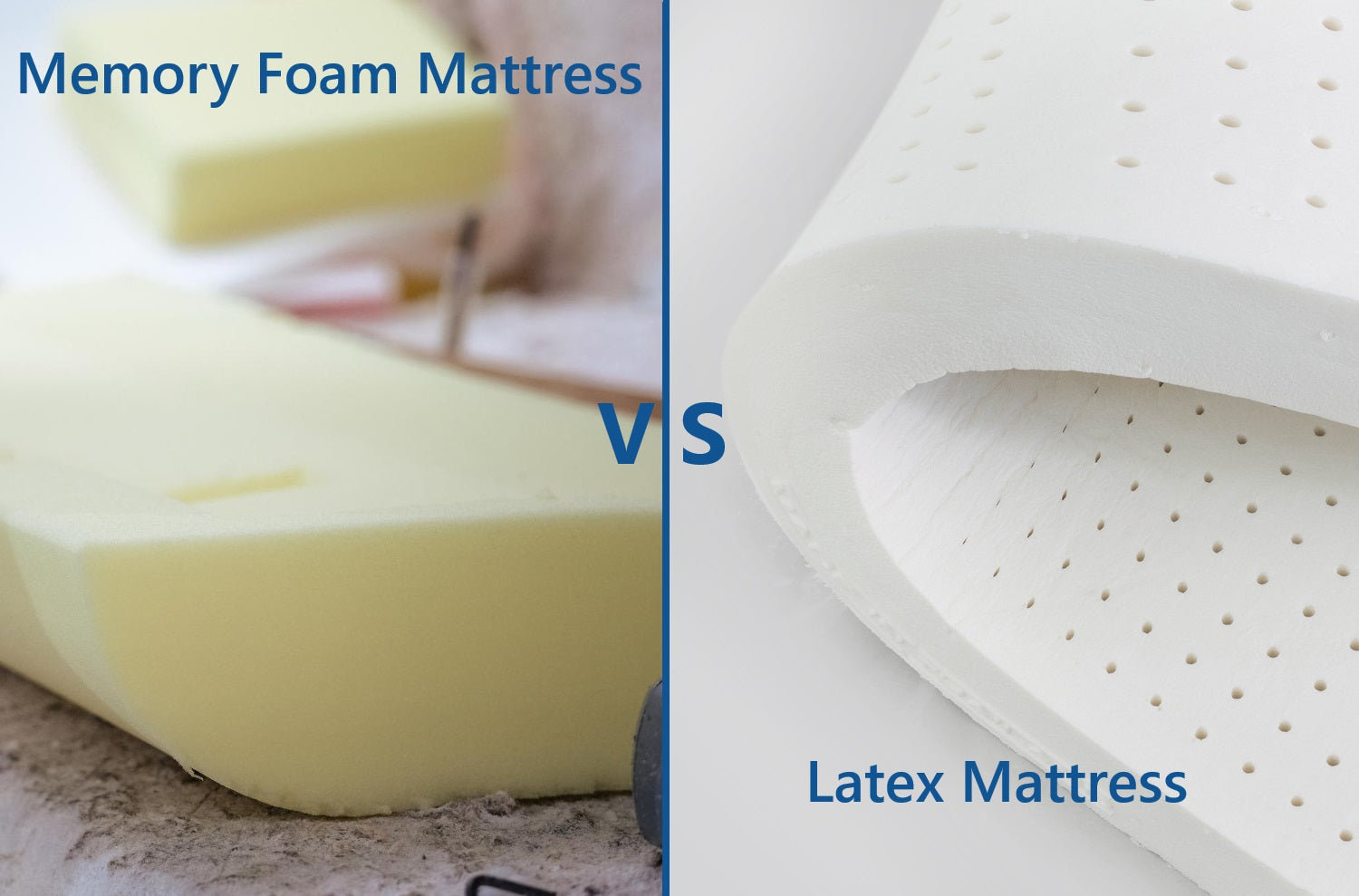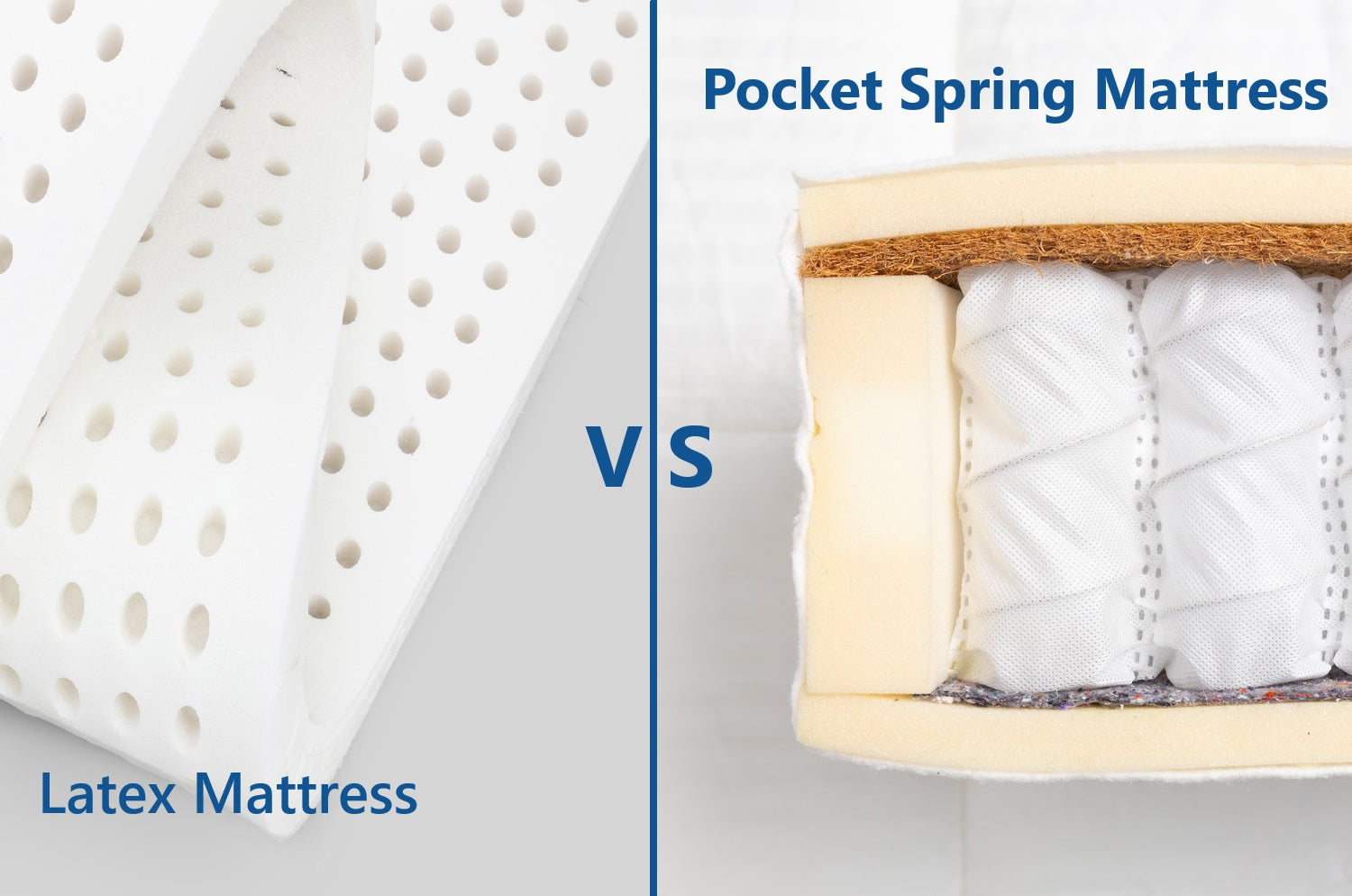Navigating the world of mattresses can be challenging. Many terms, like Dunlop, Talalay, and blended latex, can make it even harder. This guide is here to help you understand everything about latex mattresses in Cyprus. It will point you to the best latex mattress for what you need.
You will learn the differences between the types of latex mattresses and how to pick the right thickness and firmness. You'll be ready to make a wise choice. If you care about the hypoallergenic features of a natural latex mattress, want pressure relief, or need a long-lasting sleep surface, this guide will assist you. It will help you navigate the sometimes confusing world of latex mattresses.
What is a Latex Mattress?
A latex mattress is one of the various types of mattresses available and is known for its unique feeling. People often say it has a gentle "lifting" sensation, unlike memory foam's "sinking" feeling. But what is a latex mattress made of? An actual latex mattress has latex foam as its main support layer.
This latex foam comes from either natural latex or synthetic latex. Natural latex, which is Hevea brasiliensis, is taken from the sap of rubber trees. Synthetic latex, which is made by humans from petrochemicals, aims to have a similar feel and benefits as natural latex, but it differs in things like durability, breathability, and cost.
What are the benefits of a Latex Mattress?
Latex mattresses are known as a top choice for beds, and this is clear why. They offer a mix of benefits for different sleeping styles. First, they provide excellent pressure relief. The natural latex stretch fits the body well, softening pressure points and keeping the spine in line.
This is why people with back pain often choose these mattresses, as they help ease discomfort. Another big plus is temperature regulation. Unlike some memory foams that hold in heat, latex has an open-cell design. This means air can move freely in and out of the mattress.
It helps eliminate body heat, making your sleep more superb and pleasant. Lastly, latex mattresses are very durable. Their muscular build and natural ability to resist sagging have kept them in shape for many years.
What is latex made of?
Latex is derived from the sap of rubber trees, scientifically known as Hevea brasiliensis. The processing of this sap involves a meticulous procedure to eliminate impurities, resulting in a natural material that exhibits remarkable elasticity and supportiveness, making it an ideal choice for mattress manufacturing.
The latex used in mattresses is typically classified into two main types: natural and synthetic. Natural latex is obtained from rubber tree sap and is prized for its eco-friendly properties and durability. Synthetic latex is a man-made material produced through chemical processes to mimic the qualities of natural latex.
Both natural and synthetic latex offer benefits such as resilience, pressure relief, and hypoallergenic properties. Natural latex tends to be more breathable and biodegradable compared to synthetic alternatives.
Additionally, latex mattresses are known for their longevity and ability to provide a comfortable and supportive sleep surface by contouring to the body's shape while maintaining responsiveness.
What are the components of a latex mattress?
A look inside shows the layers that make up a latex mattress. The latex core is important, but the mix of materials shapes how comfortable and long-lasting your sleep will be. Usually, a mattress cover is present. This cover is often made from soft, breathable materials like organic cotton. It gives extra comfort and helps shield the latex core from dust, spills, and damage.
Underneath the cover is the mattress's core—the latex. Depending on the brand and model, you may find either a Dunlop or Talalay latex core. Each type has a unique feel. Some mattresses have different layers of latex that vary in firmness. This helps offer support and pressure relief wherever you need it.
Can a latex mattress trigger allergies?
One great thing about natural latex mattresses is that they can resist dust mites. Their natural structure helps to stop these tiny allergens from growing, making them a good choice for people with allergies. However, latex allergies are an important issue to consider.
Latex allergies are rare, but they do happen to some people. You should be careful if you know you are sensitive to latex materials like gloves or balloons. Choosing a mattress with certifications that show it is free from harmful substances and has been tested for allergens can give you peace of mind. Your health should always come first, so talking to a healthcare professional about your specific needs is a good idea.
What is Talalay Latex?
Talalay latex is a high-quality natural material made from the sap of rubber trees. It is well-known for its softness and flexibility. The talalay process starts with whipping liquid latex into a foam.
Then, this foam partially fills a mould. After that, it is vacuum-sealed, and carbon dioxide is injected. Finally, the mixture is flash-frozen and baked. This special method results in a smooth, open-cell structure, which gives talalay latex its unique light and buoyant feel.
It also allows airflow, helping keep sleepers cool and comfortable all night long. What makes talalay latex special is how it gently moulds to the body and relieves pressure. Its flexible nature makes it a popular choice for comfort layers in mattresses, toppers, and pillows.
This ensures that it fits the body’s curves while minimizing pressure points. For those who are allergic or want a safer option, talalay latex is a great pick. It is non-toxic, hypoallergenic, and good for the environment, bringing peace of mind for a healthier sleep.
What is Dunlop Latex?
Dunlop latex comes from the sap of rubber trees, just like talalay latex. However, it is made using the traditional dunlop method. In this process, liquid latex is whipped into foam, placed into a mould, and then baked in a vulcanisation oven.
This creates natural latex foam that is denser and firmer than talalay latex. It often has a slightly uneven distribution, with the bottom being more compact. Because of this firm consistency, dunlop latex is a popular choice for the support core of mattresses. It provides reliable strength and durability.
If you like a sturdy and strong bed, dunlop latex has a variety of firmness levels to offer lasting support. It does not sag or develop impressions easily, keeping its shape and integrity even after long use.
As a natural material, dunlop latex is good for the environment and also has a budget-friendly price point. It gives a stable sleep experience, making it a great base for natural latex mattresses and adding comfort layers above.
What is the lifespan of a Latex Mattress in Cyprus?
Investing in a new mattress is an important choice. It's good to know how long it will last. If you choose a latex mattress in Cyprus, you can expect it to provide comfortable sleep for many years. Natural latex is very durable, which helps it last longer than many other mattress types.
A regular spring mattress often lasts about 6 to 8 years. A well-cared-for latex mattress can give you over ten years of good sleep. Its natural ability to resist sagging and keep its shape means you get steady support and comfort every night.
What is the Firmness of a Latex Mattress?
Firmness is different for everyone, even when it comes to mattresses. What one person finds comfortably firm, another may see as too soft. This is why knowing about latex mattress firmness is essential, especially when looking for options in Cyprus. Latex mattresses come in many firmness levels, each designed for different sleeping positions and body types.
The firmness of a latex mattress mainly depends on the density of the latex foam used. A higher density usually makes the mattress feel firmer. Heavier sleepers often choose firmer mattresses. These provide the proper support and stop too much sinking. On the other hand, if you want a softer feel, you might pick a mattress with a lower-density latex core.
What are the different types of latex mattresses?
When choosing a latex mattress, you should think about the different types. This choice will affect how it feels, how long it lasts, and the cost.
The main types of latex mattresses are natural latex, synthetic latex, and blended latex. Knowing what makes each type unique can help you decide what is best for your sleep needs and budget.
Natural Latex Mattress
Natural latex mattresses are made from the sap of rubber trees. This natural source appeals to people who want a more eco-friendly sleep option. There are two main ways to make natural latex: Dunlop and Talalay. Each type has a slightly different feel.
Dunlop latex is known for being thick and strong. It usually feels firmer than Talalay latex, which has more air, giving it a softer, almost fluffy feel.
Organic latex mattresses are also an option for those who prefer only organic materials. These mattresses come from rubber trees grown without the use of synthetic pesticides or herbicides. This focus on quality and sustainability costs more, but it matches the values of eco-aware shoppers.
Synthetic Latex Mattress
Synthetic latex mattresses try to copy the feel and benefits of natural latex. They use artificial materials, usually made from petrochemicals. This process makes them cheaper than natural latex, appealing to people who want to save money.
However, being affordable has some downsides. Synthetic latex mattresses may not last as long or be as strong as natural latex, and the synthetic foam can break down more quickly.
This may cause sagging and a loss of support over time. Also, even though synthetic latex is often called hypoallergenic, people sensitive to some chemicals might have reactions to it.
Blended Latex Mattress
Blended latex mattresses balance the high-quality feel of natural latex and the lower cost of synthetic latex. As their name suggests, these mattresses mix natural and synthetic latex, which helps makers set the feel and price.
One key benefit of blended latex mattresses is that they can suit different sleep styles. Makers can change how much natural or synthetic latex is used, creating a firmer or softer feel for other support needs.
Also, blending latex gives you a more affordable choice without losing out on the good things about natural latex. Since they include some natural latex, these mattresses offer some breathability, toughness, and hypoallergenic features but not as much as an entirely natural latex mattress.
What are the thickness ranges for latex mattresses?
Latex mattresses have different thickness options. Your proper thickness will depend on your personal choice, height, and whether you share your bed with someone. Knowing the differences can help you decide better.
Each thickness option meets various needs. Understanding what works for you can lead to better sleep. Most latex mattresses come in three thicknesses: low, medium, and high. Each type offers a unique comfort and support level.
Low Profile (15 to 20 cm)
Low-profile latex mattresses, between 15 and 20 cm thick, have a simple and clean look. They are great for different types of sleepers. These mattresses provide enough support and comfort while keeping you thin.
The smaller thickness is perfect for those who want a firmer feel without losing quality. Also, low-profile latex mattresses fit well in small spaces or for people who like sleeping closer to the ground.
Medium Profile (23 to 25 cm)
A medium-profile latex mattress in Cyprus usually measures between 23 and 25 cm thick. This type of mattress provides a good mix of support and comfort, working well for different sleep styles and preferences.
The medium height helps with pressure relief and spinal alignment, making it a great choice for all body types and sleeping positions. You can also find options made with natural and organic latex. These choices help you sleep better while being better for the environment.
High Profile (28 to 35 cm)
High-profile latex mattresses are between 28 to 35 cm thick. They offer great support and comfort. These mattresses are usually made with layers of natural latex foam. They are very good at relieving pressure and keeping your spine aligned.
Their thickness makes them strong and long-lasting. This feature is ideal for heavier sleepers or people with back pain. High-profile latex mattresses also reduce motion transfer and help control temperature. As a result, they provide a comfy and luxurious sleep experience. They meet the highest standards of quality and comfort.
How are latex mattresses classified based on firmness?
Like other mattress types, latex mattresses are sorted by their firmness. They can be soft, medium, or firm. This sorting helps buyers find a mattress that fits their sleep habits and needs.
It's important to remember that firmness can vary by brand. For example, a medium-firm mattress from one brand may feel different from a medium-firm mattress made by another.
What factors determine the firmness of a latex mattress?
Several factors affect how firm a latex mattress feels. Knowing these can help you pick a mattress that fits your needs. One key factor is the density of the latex foam in the mattress. Denser latex feels firmer and gives more support, which is excellent for those who want a supportive sleeping surface.
Another important aspect is the ILD (Indentation Load Deflection) rating. This rating tells you how much force is needed to press down the latex foam. A higher ILD rating means a firmer mattress.
The thickness of the latex core also affects how firm the mattress feels. Thicker cores usually provide a softer and more pleasant feel, while thinner cores tend to be firmer since they give less.
How is the firmness of a latex mattress measured?
Consider different factors when you want to know how firm a latex mattress is. It's not just about being soft or firm. One crucial factor is the latex's density, measured in kilograms per cubic meter (kg/m³). Higher density usually means a firmer mattress.
The way the mattress is made also matters. This includes whether it uses Dunlop or Talalay latex. Dunlop latex tends to be denser at the bottom because latex particles settle during production, creating a mattress with different firmness levels. Talalay latex is made more controlled, which generally results in more firmness throughout.
Another way to measure firmness is through the ILD (Indentation Load Deflection) rating. This rating shows how much force is needed to make a mark in the latex to a specific depth. Higher ILD numbers mean the mattress feels firmer.
Does a latex mattress provide better support than a memory foam mattress?
The lengthy discussion about latex vs. memory foam often concerns what you like. Both types can give good support, but they work differently. Memory foam moulds to your body shape. It uses body heat to do this and helps relieve pressure. This is very comfy for some people, but others might feel like they're sinking too much. Latex foam gives a different feeling. It feels more like it lifts you instead of sinking in.
This makes latex mattresses a good choice for those who want more support from their bed. In the end, which one is better depends on what you need. If you like being hugged by your mattress, a memory foam mattress might be best. But a latex mattress could be the perfect fit if you want something more responsive and bouncy.
What is the difference between a latex mattress and a pocket spring mattress?
Choosing between a latex mattress and a pocket spring mattress means looking at each type's good and bad sides. Pocket spring mattresses are known for their great bounce and breathability. They mix a classic feel with modern tech. Unlike regular mattresses, pocket spring mattresses have springs that are wrapped separately. This allows them to move independently, which helps give targeted support and reduce motion transfer.
Latex mattresses, on the other hand, are great for moulding your body's shape. They provide pressure relief and a 'floating' feeling. While pocket spring mattresses can adapt somewhat to your body, the top layer dramatically affects their feelings. Latex mattresses, in comparison, give steady support all through their centre.
Motion transfer is another important point to consider. Pocket spring mattresses are much better at reducing motion than older types. Still, latex mattresses are even better. The dense structure of latex soaks up motion well, making latex mattresses a great option for couples who sleep in the same bed.




